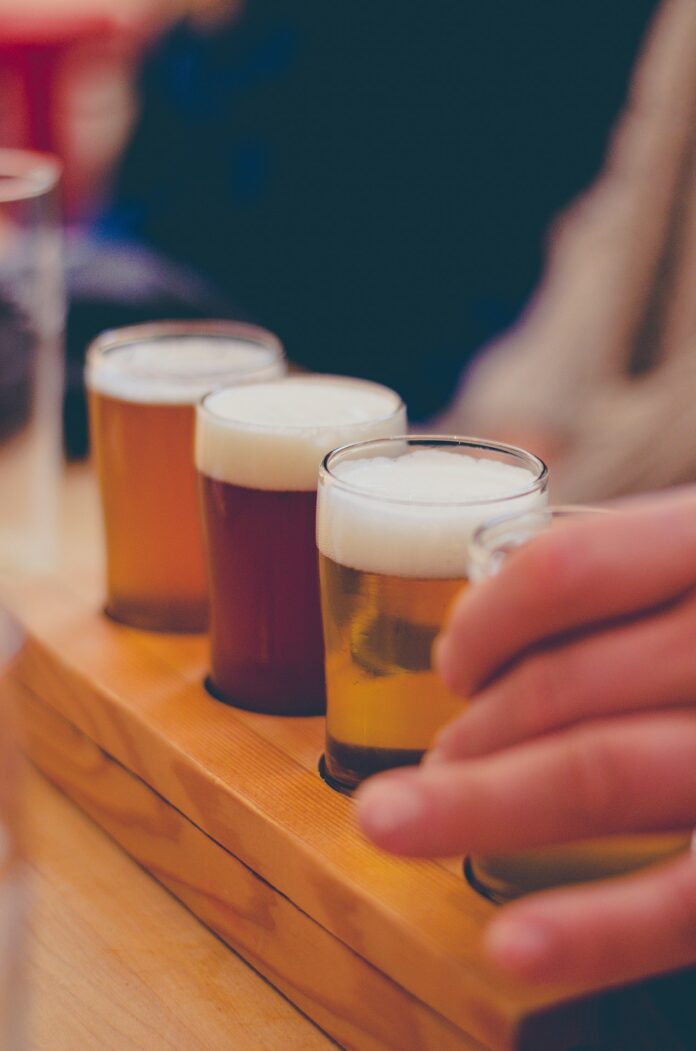My Summer Adventure!
I might be a sommelier who revels in all that is wine, but, by gosh, I can’t think of anything more satisfying than a quenching pint of cold beer on a hot summer day. And I’m not the only one.
Mesopotamian cultures brewed the first beers some 10,000 years ago. Beer, as we know it, came about in the 12th century with hops in Ale, and the Lager method was introduced in the mid-19th century. From there, countless styles have developed. Selecting a beer today has become a daunting task. Here are a few pointers to help you out.
At its most basic, beers are classified into three categories defined by the type of yeasts they use. I will only cover the first two:
- Ale uses the Saccharomyces cerevisiae – a warm, top-fermenting yeast.
- Lager (aka Pilsner) – uses the Saccharomyces uvarum – a cold, bottom-fermenting yeast.
- Lambic uses wild yeast.
Because of the type of yeast used, Ales are a fruitier, spicier, fuller bodied and somewhat bitter beer (think English Ale). In contrast, a Pilsners takes longer to make and are brewed in colder conditions, resulting in a crisper, lighter, smoother drink (think German Lager).
Beyond these fundamental differences, the two types of beer use similar ingredients and approaches. Both use hops, grains (barley, oat, corn, rice) malted (roasted) to different degrees, and flavourings, such as spices and fruits, to add interest. As a result, selecting a beer can be daunting.
Brewers invest passion, sweat, and tears into their craft. This is why we owe it to them to overcome our sense of confusion and understand what they are offering, rewarding in the process those who brew quality.
One way to do this is by assessing the beer’s ‘balance’. This is perhaps the most elusive yet defining characteristic of a good beer. For example, a Pale ale can be watery, leaving little after taste. In contrast, another can leave a crisp, lingering citrusy finish that begs you for more. Beyond personal preferences, you know the beer is “in balance” when the flavours, the aromatics, and the mouthfeel are in proportion with one another. With practice (meaning mindful beer tasting), you will learn to recognize a good craft beer.
I invite you to engage in beer tastings with friends and family. It is a lot of fun. First, decide if you want to explore, Ale or Lager. Then, pick a couple of styles within your category. If you choose Ale, you may wish to explore Pale, Amber and Stout. Buy two different beers of each from local breweries. Don’t hesitate to ask your retailer for guidance. Find a beer chart to guide your tasting (many are available on the web), pour the beer and Voilà! Sit down, taste, discuss, argue, understand and have fun.
Use this summer pandemic as an opportunity to discover local breweries. Learn about their styles. Compare them. Find out which you like most. There are over 61 breweries (yup!) in and around Calgary alone. If you are looking for more, Canmore, Banff, and pretty much all the small towns in Alberta enjoy a brewery they can call their own. To plan your excursions, go to www.yycbeer.ca for the lasted inventories of breweries complete with a map to find them. Knowing a little bit about Alberta craft beer and pairing them with food will go a long way to elevate your enjoyment of both.
Happy dog days of summer!
Beer and Food Pairing:
- Pale lager and Ale love creamy food that begs for lemon wedges (Fish and chips, caesar salads, fettuccine alfredo).
- IPA or amber ales match well salty, spices and fried food (East Indian food, chicken wings, pizza).
- Red and Brown ales wash down hamburgers, steaks delightfully.
- Porter and stouts stand out to the rich roasted, smoked, BBQ, even salty meats such as ribs, pulled pork and sausages.
Renée is an accredited Sommelier by the International Sommelier Guild, The Wine and Spirit Education Trust, and Fine Vintage.










